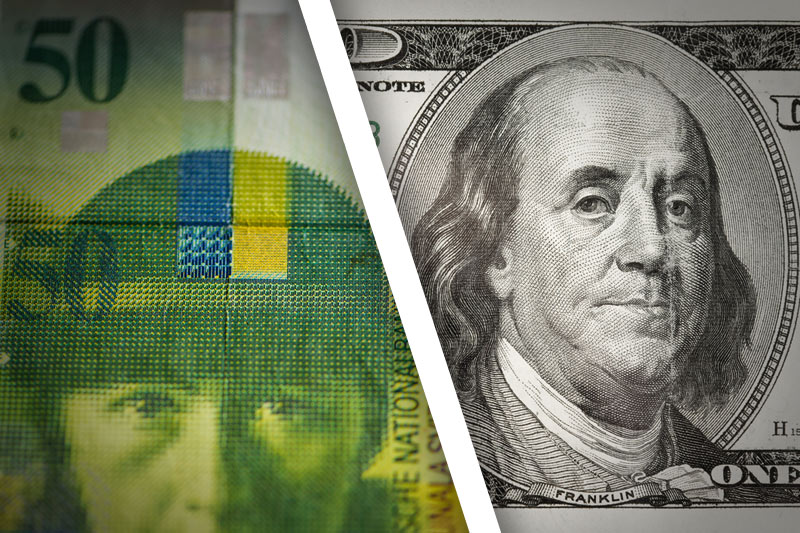Investing.com - The U.S. dollar was higher against the Swiss franc on Monday, as concerns over a slowdown in the U.S. job market and future debt negotiations lent support to the safe haven greenback.
USD/CHF hit 0.9287 during European morning trade, the session high; the pair subsequently consolidated at 0.9270, rising 0.25%.
The pair was likely to find support at 0.9176, the low of January 3 and resistance at 0.9327, the high of December 12.
On Friday, the U.S. Department of Labor said the economy added 155,000 jobs in December, slightly higher than forecasts for an increase of 150,000, but easing from an upwardly revised increase of 161,000 in November, suggesting that the recovery in the labor market may be slowing.
The data came one day after the minutes of the Federal Reserves’ December policy meeting showed that some policymakers considered an earlier-than-expected end to the bank’s quantitative easing program.
Investors also remained cautious over the longer term outlook in the U.S., with negotiations on raising the debt ceiling still to come in February.
Earlier in the day, a report by the Swiss National Bank showed that foreign currency reserves declined to CHF427.17 billion in December from CHF427.37 billion the previous month, down for the third successive month.
The SNB’s currency reserve holdings are closely watched by investors for indications of how much the bank is spending to defend the 1.20 minimum exchange rate floor against the euro imposed in September 2011.
Elsewhere, the Swissie was almost unchanged against the euro with EUR/CHF inching up 0.04%, to hit 1.2088.
Also Monday, the Sentix index of investor confidence in the euro zone came in at minus seven in January, its highest level since February 2011, after a reading of minus 16.8 last month.
USD/CHF hit 0.9287 during European morning trade, the session high; the pair subsequently consolidated at 0.9270, rising 0.25%.
The pair was likely to find support at 0.9176, the low of January 3 and resistance at 0.9327, the high of December 12.
On Friday, the U.S. Department of Labor said the economy added 155,000 jobs in December, slightly higher than forecasts for an increase of 150,000, but easing from an upwardly revised increase of 161,000 in November, suggesting that the recovery in the labor market may be slowing.
The data came one day after the minutes of the Federal Reserves’ December policy meeting showed that some policymakers considered an earlier-than-expected end to the bank’s quantitative easing program.
Investors also remained cautious over the longer term outlook in the U.S., with negotiations on raising the debt ceiling still to come in February.
Earlier in the day, a report by the Swiss National Bank showed that foreign currency reserves declined to CHF427.17 billion in December from CHF427.37 billion the previous month, down for the third successive month.
The SNB’s currency reserve holdings are closely watched by investors for indications of how much the bank is spending to defend the 1.20 minimum exchange rate floor against the euro imposed in September 2011.
Elsewhere, the Swissie was almost unchanged against the euro with EUR/CHF inching up 0.04%, to hit 1.2088.
Also Monday, the Sentix index of investor confidence in the euro zone came in at minus seven in January, its highest level since February 2011, after a reading of minus 16.8 last month.
